
Furfuryl alcohol NEW
| Price | Get Latest Price |
| Package | 25KG |
| Min. Order: | 1KG |
| Supply Ability: | 50000KG/month |
| Update Time: | 2023-08-18 |
Product Details
| Product Name: Furfuryl alcohol | CAS No.: 98-00-0 |
| EC-No.: 202-626-1 | Min. Order: 1KG |
| Purity: 99% | Supply Ability: 50000KG/month |
| Release date: 2023/08/18 |
| CAS: | 98-00-0 |
| MF: | C5H6O2 |
| MW: | 98.1 |
| EINECS: | 202-626-1 |
| Product Categories: | alcohol Flavor;Furans;fine chemical;fine chemicals;Additives;pharmaceutical raw material;Industrial Grade;Elisa Kit-plant ELISA Kit |
| Mol File: | 98-00-0.mol |
 | |
| Furfuryl alcohol Chemical Properties |
| Melting point | -29 °C (lit.) |
| Boiling point | 170 °C (lit.) |
| density | 1.135 g/mL at 25 °C (lit.) |
| vapor density | 3.4 (vs air) |
| vapor pressure | 0.5 mm Hg ( 20 °C) |
| refractive index | n |
| FEMA | 2491 | FURFURYL ALCOHOL |
| Fp | 149 °F |
| storage temp. | Store below +30°C. |
| solubility | alcohol: soluble |
| pka | 14.02±0.10(Predicted) |
| form | Liquid |
| color | Clear yellow |
| PH | 6 (300g/l, H2O, 20℃) |
| Odor | Mildly irritating. |
| Odor Threshold | 8 ppm |
| Odor Type | bready |
| explosive limit | 1.8-16.3%(V) |
| Water Solubility | MISCIBLE |
| FreezingPoint | -29℃ |
| JECFA Number | 451 |
| Merck | 14,4305 |
| BRN | 106291 |
| Exposure limits | NIOSH REL: TWA 10 ppm (40 mg/m3), STEL 15 ppm (60 mg/m3), IDLH 75 ppm; OSHA PEL: TWA 50 ppm; ACGIH TLV: TWA 10 ppm, STEL 15 ppm (adopted). |
| LogP | 0.3 at 25℃ |
| CAS DataBase Reference | 98-00-0(CAS DataBase Reference) |
| IARC | 2B (Vol. 119) 2019 |
| NIST Chemistry Reference | 2-Furanmethanol(98-00-0) |
| EPA Substance Registry System | 2-Furanmethanol (98-00-0) |
| Furfuryl alcohol Usage And Synthesis |
| Description | Furfuryl alcohol is clear colorless organic liquid having a furan substituted with a hydroxymethyl group. It is primarily used for the synthesis of furans resins which are used in thermoset polymer matrix composites, cements, adhesive and coatings. It plays an essential role in the production of foundry sand binder and has long been used to produce cores and molds for metal casting. Other applications include as a fuel and wood treatment. In industry, it is manufactured through either direct reduction of furfural, or through the disproportionation via the Cannizaro reaction in NaOH solution. The basic raw materials for its manufacturing are waste vegetable materials such as rice hulls, sugar cane bagasse, oat hulls or corncobs. |
| References | https://en.wikipedia.org/wiki/Furfuryl_alcohol http://www.furan.com/furfuryl_alcohol_applications.html |
| Chemical Properties | clear yellow liquid |
| Chemical Properties | Furfural alcohol is a colorless to amber liquid that darkens on exposure to light. It has a faint, burning odor. |
| Chemical Properties | Furfuryl alcohol has a very mild, warm, oily, “burnt” odor and a cooked sugar taste. |
| Physical properties | Clear, colorless to pale yellow liquid with an irritating odor. Darkens to yellowish-brown on exposure to air. A detection odor threshold concentration of 32 mg/m3 (8.0 ppmv) was determined by Jacobson et al. (1958). |
| Occurrence | Reported found in roasted almonds, cooked apple, apple juice, roasted barley, beans, beef fat, canned beef stew, beer, brandy, white bread, cocoa, cocoa bean, roasted coffee, roasted flberts, honey, heated skim milk, dried mushrooms, roasted onion, yellow passion fruit, roasted peanuts, pineapple, popcorn, potato chips, roasted sesame seeds, cheeses, milk, meats, grape wines, cognac, whiskies, soybean products, coconut, corn oil, shrimps, clams and other sources |
| Uses | Colorless liquid that turns dark in air |
| Uses | Furfuryl Alcohol has been obtained by yeast reduction of furfural. Furfuryl Alcohol is used as solvent and in the manufacturing of wetting agents, resins. |
| Uses | Solvent; manufacture of wetting agents, resins. |
| Definition | ChEBI: A member of the class of furans bearing a hydroxymethyl substituent at the 2-position. |
| Preparation | Usually prepared from furfural that is obtained by the processing of corncobs; oil obtained by steam distillation of roasted coffee bean meal consists of 50% furfuryl alcohol; prepared industrially by the catalytic reduction of furfural using nickel and Cu-CrO catalysts. |
| Aroma threshold values | Detection: 1 to 2 ppm. |
| Taste threshold values | Taste characteristics at 50 ppm: burnt, sweet, caramellic and brown. |
| Synthesis Reference(s) | Synthesis, p. 246, 1977 Tetrahedron Letters, 33, p. 5417, 1992 DOI: 10.1016/S0040-4039(00)79109-X |
| General Description | A clear colorless liquid. Flash point 167°F. Boiling point 171°F. Denser than water. Contact may irritate skin, eyes and mucous membranes. May be toxic by ingestion and skin contact and moderately toxic by inhalation. |
| Air & Water Reactions | Slightly soluble in water. |
| Hazard | May react explosively with mineral acids and some organic acids. Toxic by inhalation and skin absorption. Approved for food products. Toxic by skin absorption. |
| Health Hazard | Inhalation causes headache, nausea, and irritation of nose and throat. Vapor irritates eyes; liquid causes inflammation and corneal opacity. Contact of skin with liquid causes dryness and irritation. Ingestion causes headache, nausea, and irritation of mouth and stomach. |
| Fire Hazard | Combustible material: may burn but does not ignite readily. When heated, vapors may form explosive mixtures with air: indoors, outdoors and sewers explosion hazards. Contact with metals may evolve flammable hydrogen gas. Containers may explode when heated. Runoff may pollute waterways. Substance may be transported in a molten form. |
| Chemical Reactivity | Reactivity with Water No reaction; Reactivity with Common Materials: No reactions; Stability During Transport: The product darkens and forms water insoluble material on exposure to air or acids. This reaction is accelerated at elevated temperatures; Neutralizing Agents for Acids and Caustics: Not pertinent; Polymerization: Not pertinent; Inhibitor of Polymerization: Not pertinent. |
| Biochem/physiol Actions | Taste at 20-40ppm |
| Safety Profile | Poison by ingestion, skin contact, and subcutaneous routes.Moderately toxic by inhalation and intraperitoneal routes. Mutation data reported. An eye irritant. Flammable when exposed to heat or flame; can react with oxidtzing materials. Moderate explosion hazard when exposed to heat or flame. Reacts violently with acids (e.g., formic acid, cyanoacetic acid + heat). Ignites on contact with 85% hydrogen peroxide. To fight fire, use alcohol foam, CO2, dry chemical. When heated to decomposition it emits acrid smoke and fumes. |
| Potential Exposure | Used as a starting monomer in the production of furan resins and used to produce tetrahydro furfural alcohol (THFA). |
| Carcinogenicity | The NTP conducted a 2-year inhalation study on furfuryl alcohol. F344 rats and B6C3F1 mice were exposed to 0, 2, 8, or 32 ppm furfuryl alcohol for 6 h/day, 5 days/week. All rats exposed to 32 ppm died by week 99; survival of all other animals was similar to control animals. There were increased incidences of nasal tumors in the male rats and increased incidences of kidney tubule tumors in male mice. Increased incidences of nonneoplastic lesions of the nose and increased severities of nephropathy were observed in male and female rats and male mice. Nonneoplastic lesions of nose and corneal degeneration occurred in female mice. |
| Source | Furfuryl occurs naturally in yarrow, licorice, sesame seeds, clove flowers, and tea leaves (Duke, 1992). Also detected in barrel-aged red, white, and model wines. Concentrations ranged from 3.5 mg/L in white wine after 55 wk of aging to 9.6 mg/L after 11 wk of aging (Spillman et al., 1998). Identified as one of 140 volatile constituents in used soybean oils collected from a processing plant that fried various beef, chicken, and veal products (Takeoka et al., 1996). |
| Environmental fate | Biological. In activated sludge inoculum, following a 20-d adaptation period, 97.3% COD removal was achieved. The average rate of biodegradation was 41.0 mg COD/g?h (Pitter, 1976). Chemical/Physical. Easily resinified by acids (Windholz et al., 1983). Furfuryl alcohol will not hydrolyze because it has no hydrolyzable functional group. In barrel-aged red, white, and model wines, naturally occurring furfuryl alcohol decreased in concentration with time. In red wine, furfuryl ethyl ether was identified as a degradation product after 55 wk of storage. The average percentage decrease of furfuryl alcohol was 73% (Spillman et al., 1998). |
| Shipping | UN2874 Furfuryl alcohol, Hazard Class: 6.1; Labels: 6.1-Poisonous materials. |
| Purification Methods | Distil it under reduced pressure to remove tarry material, shake with aqueous NaHCO3, dry it with Na2SO4 and fractionally distil it under reduced pressure from Na2CO3. It can be further dried by shaking with Linde 5A molecular sieves. [Beilstein 17/3 V 338.] |
| Incompatibilities | Incompatible with oxidizers (chlorates, nitrates, peroxides, permanganates, perchlorates, chlorine, bromine, fluorine, etc.); contact may cause fires or explo sions. Keep away from alkaline materials, strong bases, strong acids, oxoacids, epoxides. Contact with acids can cause polymerization. Strong reaction with oxidizers. Incompatible with alkaline earth and alkali metals; strong caustics; aliphatic amines; isocyanates, acetaldehyde, benzoyl peroxide; chromic acid, chromium trioxide; cyanoacetic acid; dialkylzincs, dichlorine oxide; ethylene oxide; hydrogen per oxide; isopropyl chlorocarbonate; lithium tetrahydroalumi nate; nitric acid; nitrogen dioxide; pentafluoroguanidine, phosphorus pentasulfide; tangerine oil; triethylaluminum, trii sobutylaluminum. Attacks some plastics, coatings and rubber. |
| Waste Disposal | Incineration in admixture with a more flammable solvent. |
Packing &shipping&Payment
Shipping:by sea or by air
Payment:T/T,western union,moneygram
Packaging Details drum
Port:Tianjin
Lead Time :
| Quantity(Kilograms) | 1 - 10000 | >10000 |
| Est. Time(days) | 5 | To be negotiated |

 Company information
Company information
Hebei Mojin Biotechnology Co., Ltd, Our company is a professional in 4'-Methylacetophenone,Levamisole hydrochloride ,N-Methylformamide and other chemical reagents research and development production enterprises. Our business covers more than 30 countries, most of the big customers come from Europe, America and other countries in the world, we can guarantee the quality and price. In recent decades, with the efforts of all employees, we have established many cooperative companies in shandong, henan, guangdong and other places. Our corporate purpose is based on the market, enhance the strength, take the road of scientific and environmental sustainable development, relying on the country. Technology r & d center, increase the investment in r & d, based on the domestic market, expand the international market, manufacturing quality products, sincere service to the society, into a modern, ecological, scientific and technological enterprise world.
 Advantage
Advantage
In stock

Company Profile Introduction
You may like
Recommended supplier
| Product name | Price | Suppliers | Update time | |
|---|---|---|---|---|
| $0.00/1KG |
VIP1Y
|
TEKA-FAST LIMITED
|
2025-01-03 | |
| $0.00/200kg |
VIP1Y
|
Qingdao RENAS Polymer Material Co., Ltd.
|
2024-09-30 | |
| $10.50/1KG |
VIP4Y
|
Hebei Chuanghai Biotechnology Co,.LTD
|
2024-08-21 | |
| $0.00/1g |
Wuhan Godbullraw Chemical Co.,ltd
|
2022-05-10 | ||
| $0.00/1KG |
Wuhan Godbullraw Chemical Co.,ltd
|
2022-04-28 | ||
| $10.00/1KG |
VIP6Y
|
Hebei Weibang Biotechnology Co., Ltd
|
2021-11-01 | |
| $0.00/10mg |
Guangzhou PI PI BIOTECH INC
|
2020-05-31 | ||
| $1.00/1kg |
VIP7Y
|
Career Henan Chemical Co
|
2018-12-21 | |
| $0.00/200kg |
VIP1Y
|
Qingdao RENAS Polymer Material Co., Ltd.
|
2024-09-29 |
- Since: 2017-12-08
- Address: Building A, Enjoy city, Zhongshan East Road, Shijiazhuang city, Hebei province
13288715578
sales@hbmojin.com


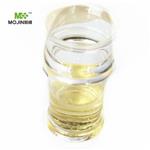
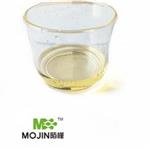
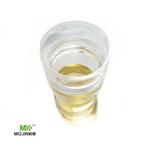
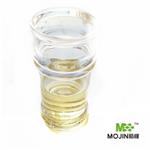
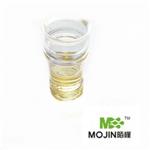
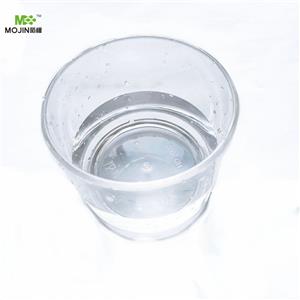
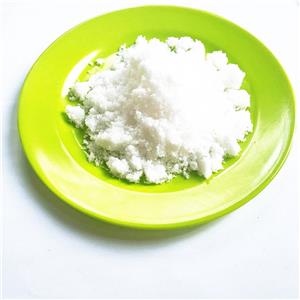
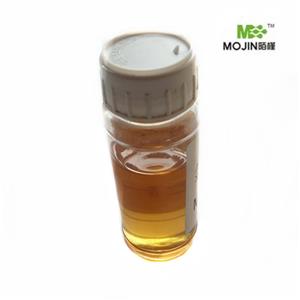

 Japan
Japan